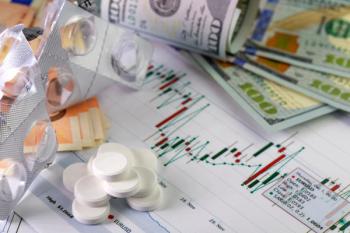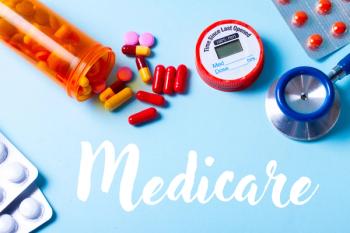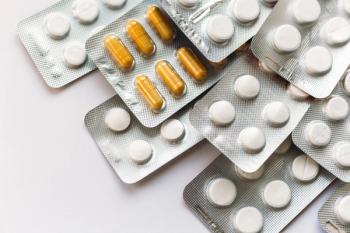
Generic Drug Shortage Solutions on the Horizon
Pharmacy organizations stress that government initiatives must include an overall plan for drug pricing, payment model, and supply chain transparency.
Shortages of vital generic drugs—particularly since the start of the coronavirus disease 2019 (COVID-19) pandemic in the US—are well known by pharmacy teams in both health systems and community settings.
And, although pharmacy associations appreciate the Trump administration’s efforts to move more pharmaceutical and active pharmaceutical ingredient (API) manufacturing to the United States via a recent executive order, they say government initiatives must include an overall plan for drug pricing, payment model, and supply chain transparency.
Since the start of COVID-19, the incredible demand for medications relating to patients being on ventilators—including sedatives, vasopressors, and neuromuscular blockers—led to several shortages. Fentanyl injection, midazolam injection, rocuronium injection, and propofol injection were among those that were most in short supply, according to Erin Fox, PharmD, senior director of drug information and support services at the University of Utah
However, the COVID-19-related shortages have largely been resolved, with the exception of neuromuscular blockers, ASHP Vice President of Government Affairs Tom Kraus, told Drug Topics®.
Although generic drug shortages have been a serious challenge during the pandemic, there are hundreds of drug shortages that occur each year, Kraus pointed out. “In the hope of getting a response from policymakers, COVID-19 shines a light on this, but it is not a new problem.”
Major Initiatives Underway to Solve Problem
Although generic drug shortages have been around for years, new government and industry initiatives may help alleviate future problems.
ASHP is urging the US government to provide “economic incentives” for foreign manufacturers to produce high quality generic drugs and APIs.
“Over half of drug shortages relate to quality problems, which result in a plant coming offline and not producing product. Particularly for low-cost generic drugs, there may not be nearly enough economic incentives for that manufacturer to bring that plant online quality,” Kraus said.
In addition, hospitals and other drug purchasers need some clarity and transparency in relation to when their products will be available. “One way we could connect the dots is let’s publish transparency around the supply chains. Purchasers could steer volume to manufacturers that have a more robust supply chain and could potentially pay a premium for that. That could be a reward for manufacturers,” Kraus said.
In another major effort to prevent generic drug shortages, President Donald Trump recently issued the “Executive Order on Ensuring Essential Medicines, Medical Countermeasures, and Critical Inputs Are Made in the United States”, which says the federal government should buy “essential” drugs and supplies made in the US rather than from overseas companies.1
“We wouldn’t buy all our essential equipment for a military operation from China or from Russia, so why should we rely so heavily on international rivals for our essential prescription drug supply of generic medications which make up 90 percent of all prescriptions in the US?” NCPA CEO B. Douglas Hoey said in a news release supporting the Order.2
“We have seen so many active pharmaceutical ingredients moved offshore, particularly to China and India. When there is a hitch in the supply chain, it ripples through the distribution channels and causes shortages for pharmacies and the patients,” Hoey told Drug Topics®.
“As pointed out in the book, Bottle of Lies, there have been problems with generic manufacturing overseas,” Scott Knoer, executive vice president and CEO of APhA told Drug Topics®. “I don’t know the right answer to fix it…the pharmaceutical manufacturers can make it cheaper over there. There are potential advantages to making more [drugs and APIs] in the US; however, there will be offsetting increased costs.”
However, although ASHP believes that there is a need for more medications and APIs to produced domestically—and using government purchasing power to incentive manufacturers to produce more domestically is one avenue—that should not come at the expensive of disrupting private sector supply chains and it should not preclude purchasers from utilizing foreign manufacturers, Kraus said.
“We are highly dependent on foreign manufacturers. While we should diversify manufacturing, we shouldn’t do that at the expense of foreign APIs, because they are an important source,” Kraus said. The pharmaceutical supply chain should be more diversified, he pointed out, in order for APIs to originate from a “broad range of foreign countries, so we are actually less dependent on one country.”
The Association for Accessible Medicines (AAM) supports the diversification of the pharmaceutical supply chain, but noted n a news release
that generic manufacturers already make “tens of billions of doses of safe, effective and affordable medicines here in America each year.”3
“The pharmaceutical supply chain has demonstrated its resilience during the pandemic by responding to unprecedented demand with strategies that ensured uninterrupted access to essential medicines for millions of patients,” said Jeff Francer, interim CEO of AAM.
However, without addressing the undervaluation of generic and biosimilar medicines in the US with sustainable market supply plans, “we simply cannot secure the domestic market and supply chain with scale and sustainability,” Francer said. To that end, AAM drafted recommendations,
The resulting rulemaking from the Order must also include a broader solution that does not just mandate increased US manufacturing of medications and APIs, Hoey pointed out. “The payment model has really driven manufacturers offshore because there is so much pressure to get cheap [medications] over quality and over accessibility. If the Administration is going to make a change, it needs to be a holistic change,” Hoey said.
The entire distribution model, including the payment model, must be more transparent because “if the squeeze is going to make pennies per bottle, then there is going to be pressure to repeat the same mistakes that have been made that have resulted in so much of our APIs being offshore,” Hoey said. “This helps, but in a vacuum it is not going to address the issue of shortages and a reliance on a foreign source for critical drugs.”
References:
- Executive Order on Ensuring Essential Medicines, Medical Countermeasures, and Critical Inputs Are Made in the United States. White House; August 6, 2020. Accessed August 21, 2020.
https://www.whitehouse.gov/presidential-actions/executive-order-ensuring-essential-medicines-medical-countermeasures-critical-inputs-made-united-states/ - NCPA statement on ‘Buy American’ Executive Order. News release. NCPA; August 6, 2020; Accessed August 21, 2020. https://ncpa.org/newsroom/news-releases/2020/08/06/ncpa-statement-buy-american-executive-order
- Generic and biosimilar industry statement on Essential Medicines Executive Order. New release. Association for Accessible Medicine; August 6, 2020. Accessed August 21, 2020. https://accessiblemeds.org/resources/press-releases/statement-on-essential-medicines-executive-order
- A Blueprint for Enhancing the Security of the U.S. Supply Chain. Associaton for Accessible Medicine; April 2020. Accessed August 21, 2020. https://accessiblemeds.org/sites/default/files/2020-04/AAM-Blueprint-US-Pharma-Supply-Chain.pdf
Newsletter
Pharmacy practice is always changing. Stay ahead of the curve with the Drug Topics newsletter and get the latest drug information, industry trends, and patient care tips.




